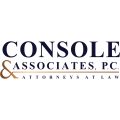Working in a nursing home involves many responsibilities and can be physically demanding. Employees often face various hazards that can lead to injuries. Understanding these common injuries is crucial for prevention and ensuring a safer work environment.
Back injuries
Nursing home employees frequently lift and move residents. This can lead to significant back strain and injuries. Improper lifting techniques or lifting too much weight are common causes. Use proper lifting techniques and mechanical lifting devices can reduce the risk.
Slip and fall accidents
Wet floors, cluttered hallways, and improper footwear cause slip and fall accidents. These incidents often result in sprains, fractures, and head injuries. Keeping floors clean and dry, clearing walkways, and wearing non-slip footwear can reduce the risk.
Exposure to infectious diseases
Handling bodily fluids, administering medications, and close contact with residents increase the risk of exposure to infectious diseases and needle poke injuries. Strict hygiene protocols and personal protective equipment (PPE) reduce these risks. Important steps include:
- Regular hand washing
- Using gloves, masks, and gowns
- Proper disposal of medical waste
- Using safety-engineered needles
Repetitive strain injuries
Tasks requiring repetitive motions, such as typing, administering medications, or feeding residents, often lead to repetitive strain injuries (RSIs). These injuries affect muscles, tendons, and nerves. To prevent RSIs, take regular breaks, perform stretching exercises, and use ergonomic tools and equipment.
Assault and violence
Nursing home employees may face aggressive behavior from residents. This can result in physical injuries and emotional stress. You can reduce this risk by training in de-escalation techniques and working in pairs.
Promoting safety in nursing homes
Understanding common injuries faced by nursing home employees is the first step in prevention. By prioritizing safety, nursing homes can create a healthier and more secure environment for both employees and residents.




